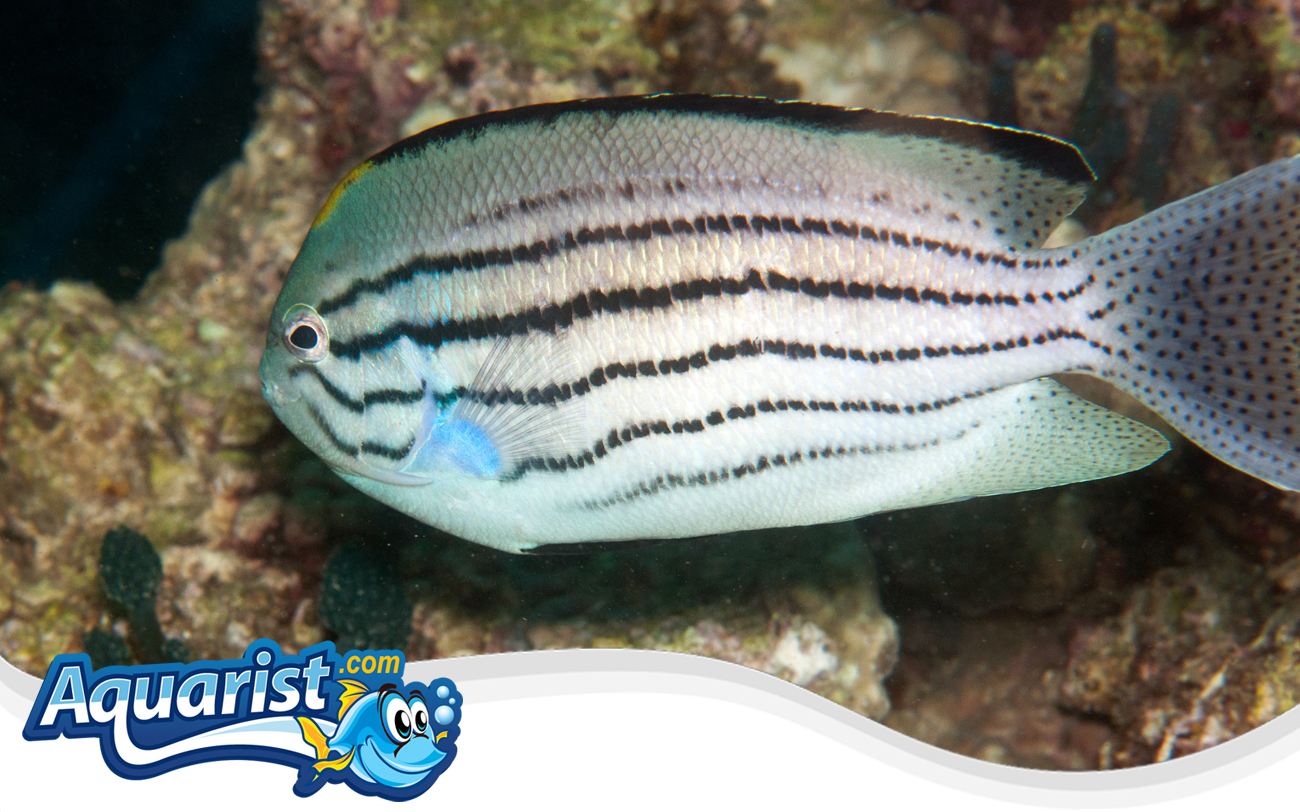Overview
- Native to the Pacific Ocean, particularly around Japan, the Philippines, and Micronesia.
- Recognized for its stunning blue-gray body with black horizontal stripes and a slightly forked tail.
- Sexually dimorphic, with males exhibiting more pronounced markings than females.
- One of the few completely reef-safe angelfish, making it ideal for coral tanks.
- Typically found in pairs or small groups in deep reef slopes and drop-offs.
Feeding
- Primarily a zooplanktivore, feeding on planktonic crustaceans and small invertebrates in the wild.
- Readily accepts a variety of aquarium foods, including flakes, pellets, frozen mysis shrimp, and brine shrimp.
- Should be fed multiple small meals throughout the day to mimic its natural feeding habits.
- Can benefit from occasional supplementation with spirulina and marine algae.
- High-protein diets help maintain its vibrant coloration and overall health.
Habitat
- Commonly inhabits deep reef slopes at depths ranging from 60 to 150 feet.
- Requires a large aquarium with ample swimming space and strong water movement.
- Best kept in a reef environment with rock structures for security and shelter.
- Prefers stable water conditions with minimal fluctuations.
- Ideal for aquariums of 100 gallons or more due to its active swimming behavior.
Fish Care
- Optimal water temperature: 74-80°F (23-27°C).
- Ideal pH range: 8.1-8.4, with a specific gravity of 1.023-1.026.
- Prone to stress if housed in improper conditions or with aggressive tank mates.
- Requires high water quality, making regular maintenance and water changes essential.
- Best suited for experienced aquarists due to its sensitivity to poor water conditions.
Compatibility
- One of the most peaceful angelfish species, making it a great addition to community reef tanks.
- Compatible with tangs, wrasses, gobies, and other non-aggressive species.
- Can be kept singly, in pairs, or in small harems with one dominant male.
- Avoid housing with aggressive fish that may outcompete it for food or cause stress.
- Thrives in an environment with peaceful tank mates that allow it to exhibit natural behaviors.
Aquarium Behavior
- Highly active swimmer, frequently seen cruising the mid-to-upper water column.
- Forms strong social bonds, especially when kept in pairs or groups.
- Curious and interactive, quickly adapting to a well-established aquarium.
- Non-aggressive but may display mild dominance behavior if housed with conspecifics.
- Requires a stable environment with consistent water parameters to thrive.


